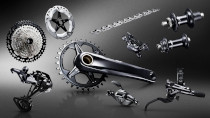It was a long way from the original Shimano Iron Works machine shop in Sakai City, Japan, to the upper echelon of the cycling world now dominated by DURA-ACE drivetrains, and it didn’t happen all at once. No, Shozaburo Shimano didn’t start spinning World Championship winning components on that first borrowed lathe in 1921. But the founder of Shimano did begin building a culture and an ethos to always evolve toward perfection–to tackle the most challenging of technical tasks, to solve problems, to always strive for the best.
Story by Andrew Juiliano / Photos from Shimano Archive
FORGED IN EXCELLENCE
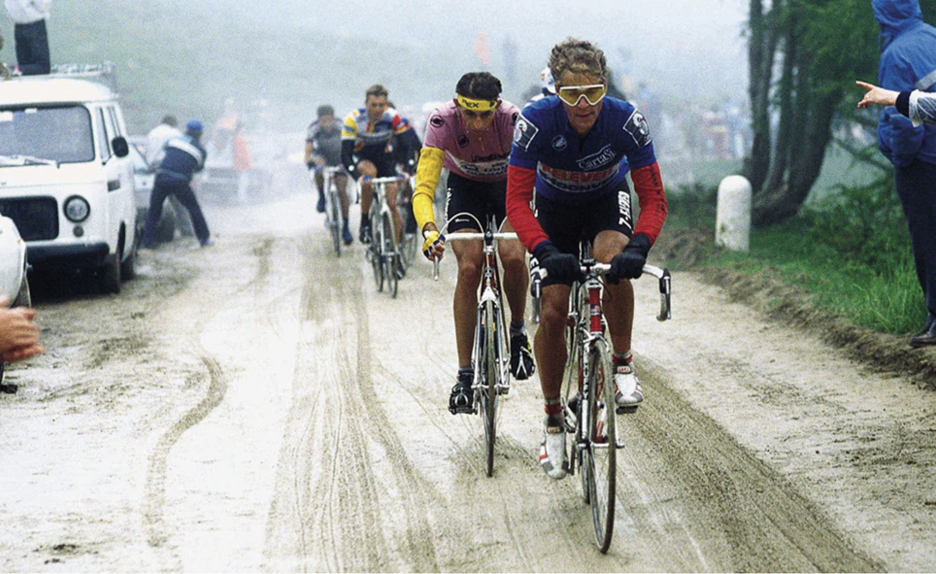
During the early years, the Shimano family business began with single-speed freewheels, and quickly evolved to encompass a number of bicycle components, like external speed shifters, internally geared hubs and cold forged wheel bearings. From nearly five decades of component manufacturing expertise and experience, the first DURA-ACE components were born. Over the next 50 years the groupset would change the bicycle as the iconic groupset became the undisputed drivetrain choice for the best riders in the world.
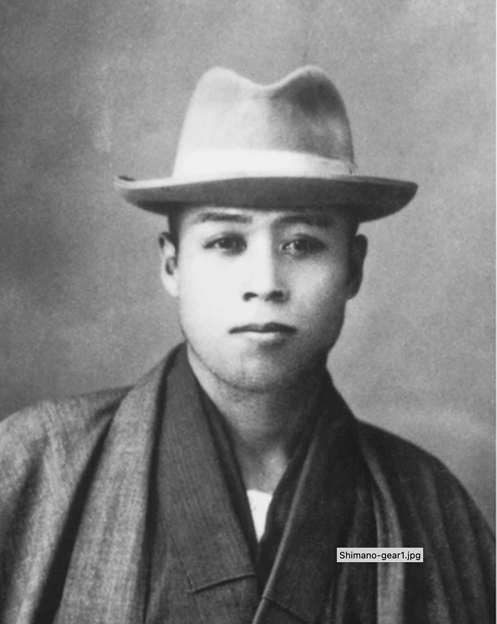
1973 PURSUIT OF PERFECTION
While Shozaburo built the family business into a trusted and reliable manufacturer for the world’s bicycle parts, it was his son, Keizo, who helped Shimano reach the top. A mechanical engineer by trade, Keizo loved not only design, but every aspect of the company. With him as the lead engineer, Shimano took products to new heights.
He had great reverence for every aspect of the process. He knew how to run all the equipment. He knew everybody’s name in the factory. He loved to ride his bike when he went home from work. He valued the input of the talented people around him, whether they were riders, engineers or machinists. With this ethos, Shimano’s finished products were elevated by the entire team that produced them. This holistic view of designing and building bicycle components would launch DURA-ACE to the top while revolutionizing bicycle components along the way.
When DURA-ACE first landed in 1973 as the company’s professional-grade downtube shifter groupset, Shimano sponsored several pro teams in Europe while also forming the Shimano Cycle Racing team in Japan as a Skunk Works Development program. Keizo believed in the input of racers, not because of their star status, but because of their athletic abilities, personal determination and frank feedback.
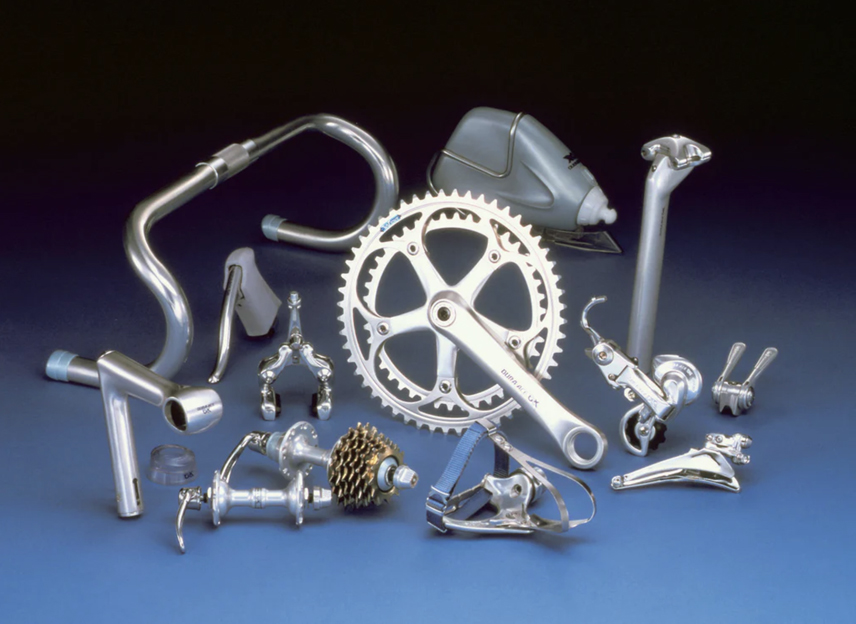
1980 PUSHING THE LIMITS
While Shimano’s components evolved and allowed professionals to push the boundaries of athletic performance, Keizo also encouraged his engineers to designers who worked with Keizo recall that mistakes were okay as long as engineers learned from them and the resulting products improved overall. Part of pushing performance meant occasionally going a bit too far.
The DURA-ACE 7400 AX Group in 1980 proved a valuable learning experience. With aerodynamics as the major focus, the group revealed that effective weather seals were critically important from a functional standpoint. What was considered a blunder at the time resulted in some of the most revolutionary advancements in shifting technology one groupset generation later. It would set a precedent that every improvement in technology and performance must also be robust and reliable, for whatever the climate or road conditions had in store.
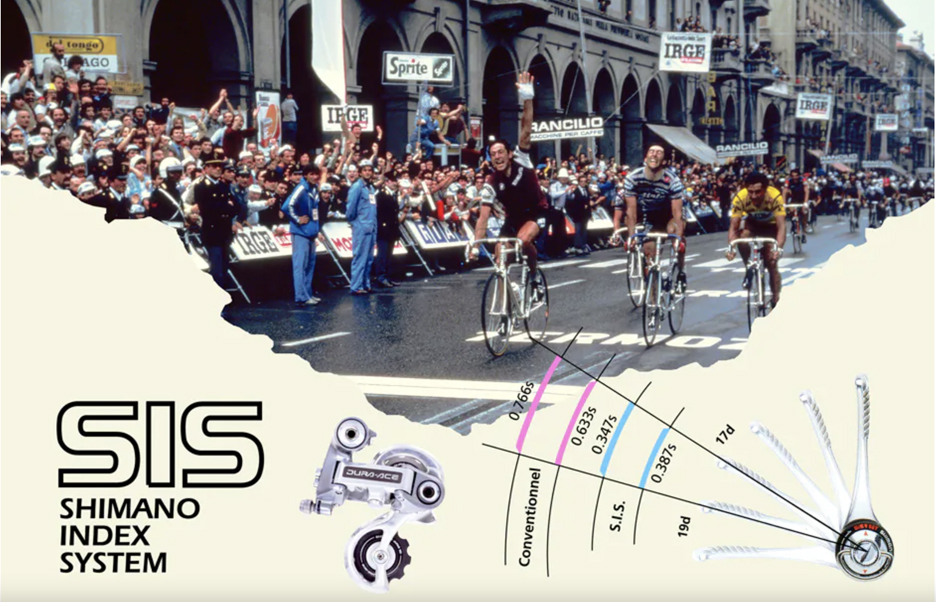
1984 THE INDEXED REVOLUTION
The Shimano Index System revolutionized the bicycle gear changing game. Now a ubiquitous feature of all shifters on every bike world wide, indexed shifting then propelled DURA-ACE and Shimano to the top of the pack. The release of DURA-ACE 7400 marked the first time that shifting became a secure, reliable and repeatable action with just a single motion. No longer did the perfect shift require the perfect touch, as indexed shifting created consistent increments and standardized gear changes system wide. It was the technology that took Shimano to the forefront of component groupsets, surpassing Suntour and Campagnolo as the most advanced shifting technology and performance in the pro peloton and on the market.
1988 HYPER HAMPSTEN
By 1988 Shimano engineers had developed Hyperglide (HG) rear synchronized cogs, which were another game changer. Around the same time the company also introduced Super Glide (SG) chainrings with synchronized shift ramps and pins. All the shifting and drivetrain technology crossed over between road racing and this cool new thing called mountain biking. Suddenly, the lab for real world testing and product development had gone off the pavement, and the new technology helped the budding mountain bike movement explore new terrain that road riders a decade earlier could only have dreamed of.
And it wasn’t just the mountain bikers taking Shimano shifting to new heights. In the early summer of 1988, a young American named Andy Hampsten, of the rag-tag 7-Eleven Cycling Team, conquered the mighty mountains of Italy to become the first, and still only, American to win the Giro d’Italia. It was the biggest win to date for DURA-ACE and Shimano. So big that Keizo, recognizing the invaluable role that athletes played in its development, flew to Italy to congratulate Hampsten in person on his Grand Tour victory.
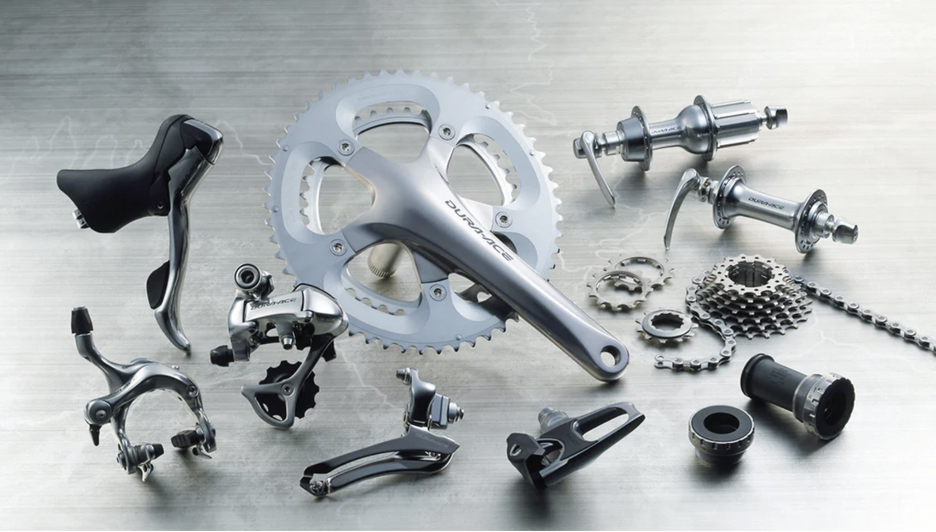
1990 STI SHIFTING
Hampsten’s win and the advent of SIS and HG technologies were just the beginning of intermingled athletic and technological exceptionalism of DURA-ACE. Athletes continued to rack up wins at Grand Tours, Cobbled Classics and World Championships. Concurrently, engineers raised their game to help meet the demands of the world’s best racers.
In 1990 STI (Shimano Total Integration) launched, marrying the braking and shifting mechanisms onto the brake levers. Gone were the rather squirly days of taking hands off the bars to change gears, or the very scary and body contorting practice of knee shifting the downtube levers mid-sprint. The design would go on to be streamlined over the years, further improving the advances in safety and reliability of DURA-ACE shifting systems. The developments had cemented DURA-ACE as the leader and the highest performance road bicycle components.
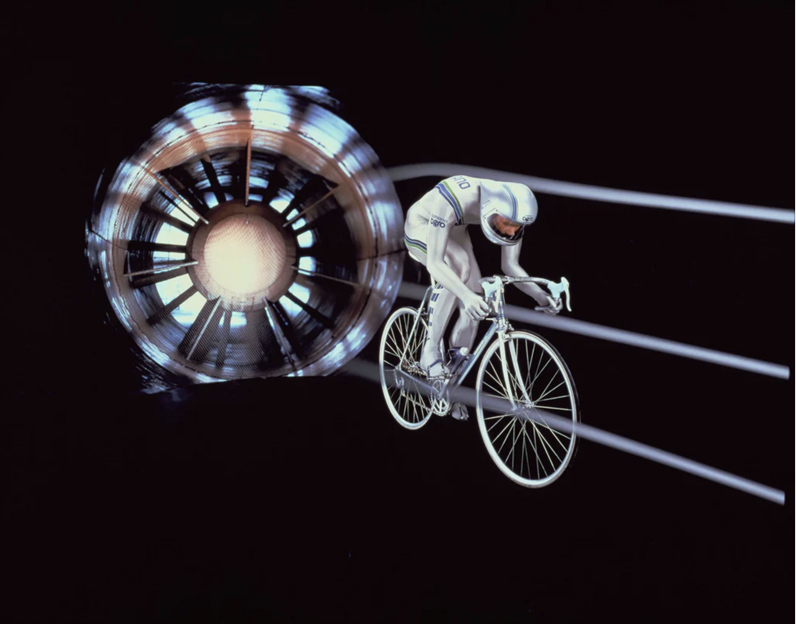
2004 ELECTRONIC DABBLING
In the mid-aughts, DURA-ACE 7800 series components appeared on the bikes of the best professional teams. This latest evolution aimed at 100-percent power transmission efficiency thanks to ten-speed rear cassette, HOLLOWTECH II double cranksets, ergonomic dual control STI levers, and other high-performance components.
But even more exciting was the electronic revolution brewing. Though Keizo had passed away a decade earlier, his philosophy and enthusiasm for discovery and product evolution lived on in Shimano’s labs and on the bikes of the world’s best cyclists. The greatest bicycle engineers in the world were developing the first prototypes of what would become the world’s first production electronic shifting group.
It wouldn’t be enough to make a groupset that just shifted with wires instead of cables. No, it had to shift electronically and perform as good or better than mechanical shifting. It had to take the same abuse and more on the cobbles of the Arenberg Forest, on the bergs of Flanders, in the Alps of France. And perform it did. Even before officially launching later in the decade, a Di2 prototype finished third at the 2007 World Championship Road Race in Stuttgart, Germany.
2009 Di2 FOR THE MASSES
After five years of rigorous development, testing, thrashing, redesigns and refinements, the world’s first mass-produced electronic shifting debuted as part of the DURA-ACE 7900 series. It was dubbed Digital Integrated Intelligence, or as it is universally referred to now, Di2.
Engineers had been given a target weight of only 100 grams heavier than mechanical shifting for that first group. The thought was that if it was any heavier, no pro would want to ride it. Well it finally weighed in 150 grams heavier and it was still in high demand among the world’s best, eventually becoming one of the most coveted drivetrains in the professional peloton. The Classics hard men and women loved it on the cobbles. It could endure the weather. It could handle the shifting loads. It could take the brutal beatings. And best of all, it created a whole new level of reliability since without cable degradation or contamination, the derailleur indexes to the same position every single time.
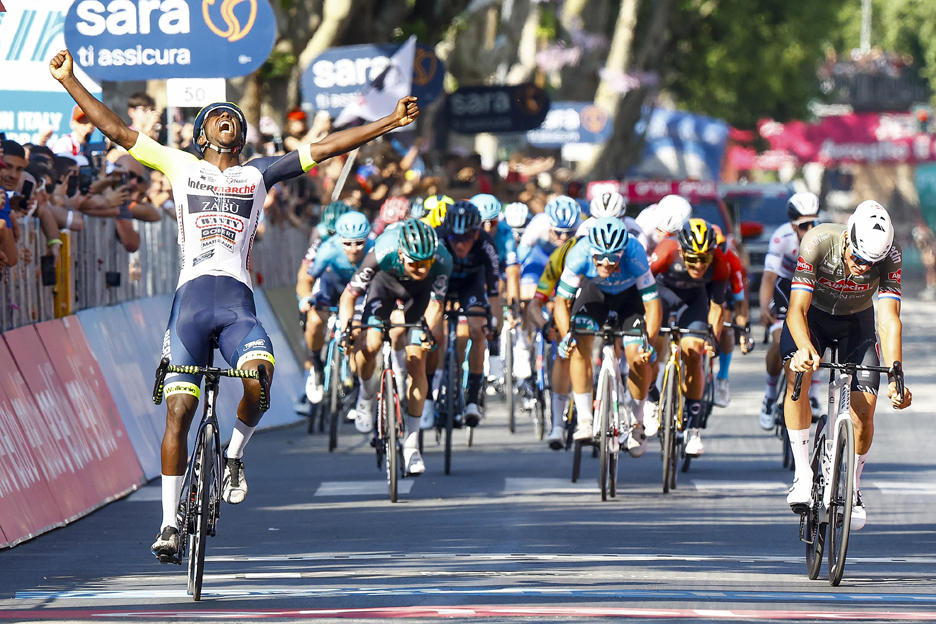
THE TRICKLE DOWN DECADE
The ensuing generations of DURA-ACE have been refined and continue to redefine the realm of possibilities for the highest performing components. The groups have won World Championships year after year, Monument after Monument, Grand Tour after Grand Tour, cyclocross world title after cyclocross world title, the fastest criteriums...the list is ever growing.
And while the globe’s best athletes continue to choose DURA-ACE on their paths to victory, riders everywhere at every level are also winners thanks to the legacy of innovation and pursuit of excellence that have defined the technology.
Groupsets like ULTEGRA, 105 and TIAGRA have outpaced the competition when it comes to reliability, durability and value thanks to the technology that trickles down from components engineered to win every kind of world class, drop-bar race. Because every cyclist, whatever their goals, whatever the ride, deserves the best technology. It’s a philosophy that started over 100 years ago in Sakai City, and it lives on in every component Shimano makes to help riders reach their best, and beyond.




